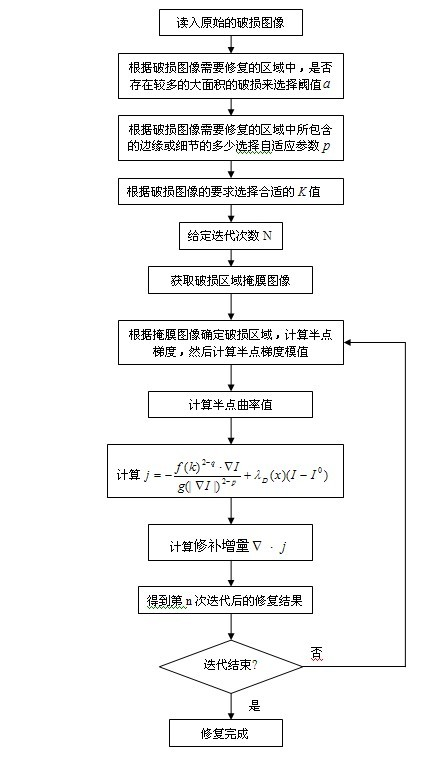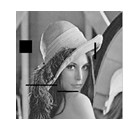Adaptive image repairing method
A repair method and adaptive technology, applied in the field of image repair, which can solve the problems of unsatisfied connectivity, long repair time, and inability to repair images correctly.
- Summary
- Abstract
- Description
- Claims
- Application Information
AI Technical Summary
Problems solved by technology
Method used
Image
Examples
Embodiment 1
[0116] Example 1: Using the method of the present invention to perform image restoration on a Lena damaged image with scratches and special patterns, where the original image is shown in Figure 4(a), and the damaged image in Figure 4(a) is shown in Figure 4(b) , the mask image of Figure 4(b) is shown in Figure 4(c), and the inpainted image of Figure 4(b) is shown in Figure 4(d); when inpainting, set p =1.5, a =1.55, K =0.8, the number of iterations is 300, and the iteration step Take 1.
Embodiment 2
[0117] Example 2: Using the method of the present invention to repair the Lena damaged image with Chinese characters, where the original image is shown in Figure 5 (a), the damaged image of Figure 5 (a) is shown in Figure 5 (b), and Figure 5 ( The mask image of b) is shown in Figure 5(c), and the inpainted image of Figure 5(b) is shown in Figure 5(d); when inpainting, set p =0.35, a =0.8, K =0.9, the number of iterations is 300, and the iteration step Take 1.
[0118] To sum up, the adaptive image repair method of the present invention can adaptively use different image repair models for different images and in different damaged areas, and the image repair effect is good and the repair time is short.
PUM
 Login to View More
Login to View More Abstract
Description
Claims
Application Information
 Login to View More
Login to View More - R&D
- Intellectual Property
- Life Sciences
- Materials
- Tech Scout
- Unparalleled Data Quality
- Higher Quality Content
- 60% Fewer Hallucinations
Browse by: Latest US Patents, China's latest patents, Technical Efficacy Thesaurus, Application Domain, Technology Topic, Popular Technical Reports.
© 2025 PatSnap. All rights reserved.Legal|Privacy policy|Modern Slavery Act Transparency Statement|Sitemap|About US| Contact US: help@patsnap.com



